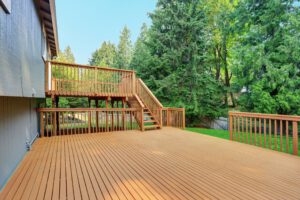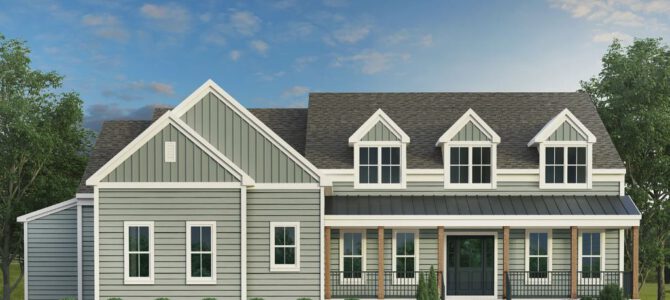Dock Repair Charleston SC helps docks withstand varying water conditions and weather changes. Routine inspections are necessary to spot problems like rot and rust before they become more serious and costly.
Inspecting a dock should include cleaning, patching holes, and removing stains as needed. It also includes looking for rust, cracks, and other signs of damage or degrading materials.

Docks are near bodies of water, where they’re exposed to the elements, storms, changing temperatures, and boat collisions. This makes them susceptible to problems like rot, cracks, and warps. If these issues aren’t addressed, they can cause further damage and safety hazards for anyone who uses the dock. Whether it’s an old wooden dock or a modern metal one, these types of damage should be inspected by professionals and repaired or replaced as needed.
The most common sign that it’s time for a dock repair is cracking or warping in the platform or supports. This is because docks are constantly under pressure from the weight of boats and people. If the cracks or warps are on non-load bearing areas then it may be possible to repair them, but if they’re on load-bearing support structures, it’s likely that a full replacement will be required.
Other signs of deterioration include rust spots on metal parts and loose screws or nails. It’s a good idea to keep these areas sanded and repainted, or even coated with a protective marine-grade coating. This helps to prevent further corrosion and to extend the life of the metal.
Another common problem is a sagging or shifting dock. This can be caused by a number of things, such as foundational deterioration, which can be very dangerous for everyone on the dock. This is because the foundational structure holds the whole dock up and if it becomes damaged, the dock could come crashing down into the water with the slightest nudge.
Other signs of deterioration include rattling noises, which can be caused by loose screws or boards that are rubbing against each other. These should be investigated as soon as possible by a qualified local dock builder, as it may be an indicator that the structural integrity of the dock is compromised.
Wooden docks can suffer from a variety of issues that make them vulnerable to damage and wear. One of the most common is wood rot, which occurs due to a fungus in the water that causes wooden materials to degrade and disintegrate over time. If the rotting is limited to just a few areas, it’s possible to repair the wood with new treated lumber. However, when rot is detected in multiple locations that are significant load-bearing parts of the dock, it’s probably time for a replacement to ensure the structure’s structural integrity.
Likewise, metal dock components can be susceptible to rust, especially those that are regularly exposed to water. A small amount of rust may be repaired with a coating or another metal that’s resistant to corrosion, but it could lead to deterioration of the steel structure and pose a safety hazard for anyone using the dock. When a large area of the dock is showing signs of rust, it’s often more cost-effective to simply replace the entire dock with a new aluminum or composite structure.
A common problem for wood boat docks is a build-up of mildew, moss, and algae, which trap moisture that erodes the wood. These conditions are not only unsightly, but they can also cause serious damage and reduce the lifespan of the dock. Removing these growths and keeping the dock clean can prevent the need for repairs.
Whether they’re caused by natural aging or lack of maintenance, most docks will eventually need to be replaced. If a dock is over 30 years old, it’s likely to have worn out significantly and need to be replaced to ensure its stability and safety for users. It’s important to inspect and maintain a dock regularly, replacing deteriorated wood and ensuring the metal components are properly lubricated to avoid rusting. Detecting these problems early through regular inspections and acting on them promptly will help extend the lifespan of a dock and keep it safe for boats and people to use. If you need assistance maintaining your,dock repair services.
Marine projects often call for superior fasteners, which are durable enough to endure the harsh environment of a marine structure. Choosing inferior fasteners could jeopardize the project’s structural integrity, potentially causing unforeseen stresses and costly repairs. Premium marine fasteners are designed for the specific challenges of their environment, frequently using materials that resist corrosion and rust.
A premium option is galvanized or stainless steel, which can withstand the exposure to salt water. Using these types of fasteners can save money in the long run, as they require far less maintenance and repair than their non-marine counterparts.
The load-bearing capacity of a dock is dependent on its surroundings and anticipated forces, including wind, waves and tides. Standards and recommendations for marine engineering offer essential information about the required load-bearing capability of a dock, and it is important to consult these specifications when choosing fasteners. It is also a good idea to include a safety margin in the load-bearing capacity calculations, to prevent the fasteners from being overloaded, which can lead to catastrophic failures.
Any dock that is exposed to the elements should be regularly inspected, particularly if it’s used by a large number of people. Loose fasteners, cracking and structural damage are just some of the things to look for when inspecting a dock. Creaking sounds are another sign that the foundation of a dock is becoming unstable.
In addition to ensuring that the dock is secure, it’s also important to regularly clean it. Floating docks should be scraped down and inspected for signs of rot and wood boring worms at least once every few years. This can be done using a short-handle flat blade shovel and is usually performed in the summertime when the dock is floating.
It’s also recommended to use sacrificial anodes when possible, as these are able to neutralize the positive charge of any dissimilar metals, which can otherwise cause galvanic corrosion. These are often available from marine professionals or hardware stores, and they are a great way to protect your investment in your dock. If you are concerned about the condition of your dock, contact a professional, who can help you determine if it is time for a replacement or a repair.
Even though the best docks are constructed of durable materials, they need regular maintenance and inspection to work at full capacity. Docks that aren’t properly maintained can become damaged and cause safety hazards for employees and products. While expert technicians should always be available for emergency repairs, a proactive approach to maintenance will cut down on unplanned downtime and save money in the long run by avoiding large-scale repair costs.
Dock inspections include looking for loose boards, rusty metal components and signs of wear or damage. It’s important to inspect docks for warping and bending as well, since these issues can lead to structural problems. Loose boards or nails can be tightened, but if there is damage to the decking material, it may be time for a replacement.
A professional inspection involves a complete look at the dock’s structure, including pilings, railings, the frame, and decks, for cracks or rotting sections. The professional will also examine the dock’s water access point and boat lifts. In addition to a full inspection, a qualified technician will apply the correct lubricants in the right places to reduce downtime caused by equipment that binds or corrodes.
It’s common for wood docks to require frequent repair due to constant contact with saltwater and weather elements. Wood rot is usually caused by a fungus that can be prevented with treated wood. It’s important to replace rotted areas immediately to avoid further damage and keep the structure stable.
Rust is another common problem that requires immediate attention. When metal sections are exposed to the elements, they will begin to corrode, and if left untreated, the corrosion can weaken the structure or break the dock’s integrity. Luckily, rust can often be removed with commercial rust removers and some elbow grease.
Effective dock maintenance plans should include a schedule for inspections of all equipment and systems, including loading dock equipment. While it is tempting to skip routine inspections or put off minor repairs in order to save money, doing so can actually cost more in the long run. A dock that isn’t working correctly can slow down a facility and cause costly supply chain disruptions.



